 Published in 2016 by The Rosen Publishing Group, Inc. 29 East 21st Street, New York, NY 10010 Copyright 2016 by The Rosen Publishing Group, Inc. All rights reserved. No part of this book may be reproduced in any form without permission in writing from the publisher, except by a reviewer. First Edition Editor: Sarah Machajewski Book Design: Michael J. Flynn Photo Credits: .
Published in 2016 by The Rosen Publishing Group, Inc. 29 East 21st Street, New York, NY 10010 Copyright 2016 by The Rosen Publishing Group, Inc. All rights reserved. No part of this book may be reproduced in any form without permission in writing from the publisher, except by a reviewer. First Edition Editor: Sarah Machajewski Book Design: Michael J. Flynn Photo Credits: .
Library of Congress CataloginginPublication Data Bath, Louella, author. Growing vegetables / Louella Bath. pages cm. (Garden squad!) Includes bibliographical references and index. ISBN 9781499409734 (pbk.) ISBN 9781499409970 (6 pack) ISBN 9781499410143 (library binding) 1. 2. 2.
VegetablesJuvenile literature. I. Title. II. Series: Garden squad! SB324.B38 2015 635dc23 2015010346 Manufactured in the United States of America CPSIA Compliance Information: Batch #WS15PK: For Further Information contact Rosen Publishing, New York, New York at 18002379932 CONTENTS VEGETABLES ARE IMPORTANT Has an adult ever told you to eat your vegetables? Most kids might rather eat sweets, but the adults are right. Eating vegetables is very important.
Vegetables have we need to stay healthy. Theyre also naturally low in calories and fat. Vegetables are one of the best food choices you can make. There are many kinds of vegetables. One way to become familiar with different kinds is to grow them yourself. Vegetable gardening takes some effort, but the hard work is worth it.
Even small gardens can produce months of fresh vegetablesright in your own backyard!  Many gardeners think vegetables are among the easiest plants to grow. Growing vegetables is a great activity for people who are new to gardening. WHAT IS A VEGETABLE? Vegetables are plants. Plants have different parts, and each has a special job. Roots keep a plant in the ground. They also take in water and that plants need to grow.
Many gardeners think vegetables are among the easiest plants to grow. Growing vegetables is a great activity for people who are new to gardening. WHAT IS A VEGETABLE? Vegetables are plants. Plants have different parts, and each has a special job. Roots keep a plant in the ground. They also take in water and that plants need to grow.
Roots are connected to a stem, which keeps the plant standing up. Some plants have an underground stem. Water travels through the stem to other parts of the plant. Leaves take in sunlight and carbon dioxide, which is a gas in the air. Flowers help make more plants. Other plant parts include fruits and bulbs, which are underground buds that store food for plants during winter.
GARDEN GUIDE Plants use sunlight, carbon dioxide, and water to make their own food This is called photosynthesis.  These plant parts work together to help plants grow and survive. A vegetable is the edible part of a plant. If something is edible, that means you can eat it. Vegetables are sorted into groups based on what part of a plant they are. That means when you eat vegetables, you could be eating a root, stem, leaf, bulb, or even flower.
These plant parts work together to help plants grow and survive. A vegetable is the edible part of a plant. If something is edible, that means you can eat it. Vegetables are sorted into groups based on what part of a plant they are. That means when you eat vegetables, you could be eating a root, stem, leaf, bulb, or even flower.
Sometimes vegetables look very different from the way you imagine a plant part would look. For example, carrots, parsnips, and beets are roots. Asparagus and celery are stems. Cabbage and kale are leaves. Broccoli and artichokes are flowers, even though they dont look like it. This in look, shape, and taste is what makes growing and eatingvegetables fun!  Tubers are vegetables that are underground stems or large roots.
Tubers are vegetables that are underground stems or large roots.
Potatoes and sweet potatoes are tubers. Bulb vegetables include onions and garlic. VEGETABLE VARIETIES  GARDEN GUIDE Some plants we call vegetables are actually fruit. A fruit is a plant part that contains seeds. Tomatoes and peppers are common examples of fruits we call vegetables. GETTING STARTED The first step in starting a vegetable garden is picking where you want to plant it.
GARDEN GUIDE Some plants we call vegetables are actually fruit. A fruit is a plant part that contains seeds. Tomatoes and peppers are common examples of fruits we call vegetables. GETTING STARTED The first step in starting a vegetable garden is picking where you want to plant it.
Most vegetables need full sun, which means they need to have between six and eight hours of sun a day. Plants that dont get enough light wont produce as many vegetables as youd like, so pick a sunny spot. Now that you have the place for your garden, think about how big you want it to be. A good tip is to think small. If your garden is too large, you can have more vegetables than you know what to do with! Starting small is a good way to keep from wasting food. GARDEN GUIDE Some vegetables grow well in partial shade.
Leafy vegetables, such as spinach, and some kinds of peas can grow without a full day of sun. 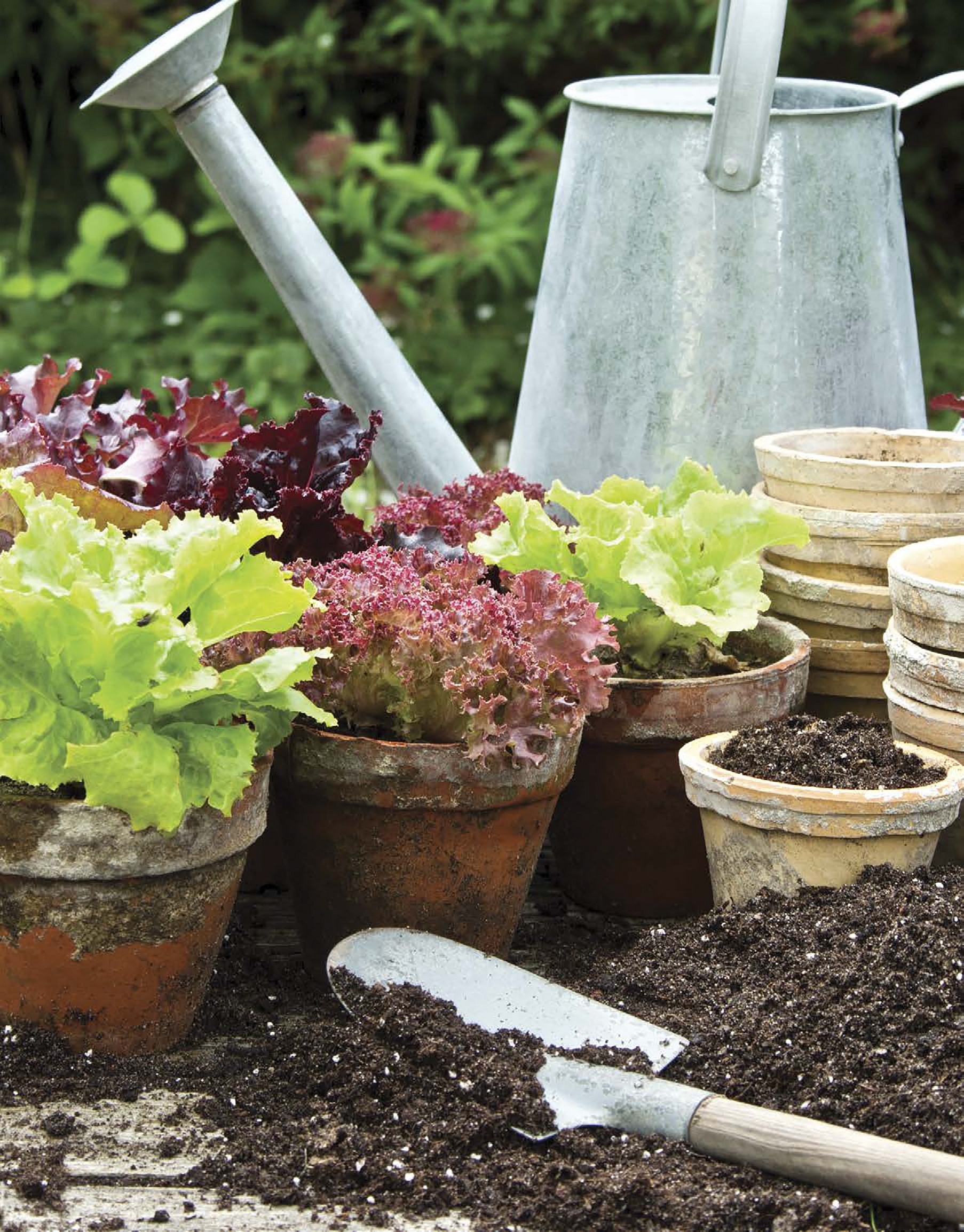 Many gardeners plant vegetables in the ground. Gardeners with limited space often grow vegetables in pots. Think about what works best for the space you have. DIG IN! The next step in vegetable gardening is preparing your garden beds. The dirt in many backyards isnt good for planting because it may lack important nutrients.
Many gardeners plant vegetables in the ground. Gardeners with limited space often grow vegetables in pots. Think about what works best for the space you have. DIG IN! The next step in vegetable gardening is preparing your garden beds. The dirt in many backyards isnt good for planting because it may lack important nutrients.
Its often too compact, or pressed together, which means air cant flow through it easily. Plants grow best in loose, nutrient-rich soil. You must make sure your garden bed has the best soil possible. Start by digging your garden bed. Turn the dirt over with a shovel, and break up big chunks with the blade. 
 Soil preparation is one of the most important gardening steps. GARDEN GUIDE Drainage is very important in vegetable gardening.
Soil preparation is one of the most important gardening steps. GARDEN GUIDE Drainage is very important in vegetable gardening. 
 Soil preparation is one of the most important gardening steps. GARDEN GUIDE Drainage is very important in vegetable gardening.
Soil preparation is one of the most important gardening steps. GARDEN GUIDE Drainage is very important in vegetable gardening.
Your plants roots will rot, or die, if they sit in standing water. RAISED BEDS Many people plant vegetables directly in the ground. However, some gardeners choose to use raised garden beds. A raised garden bed is a garden whose soil rises about 1 foot (0.3 m) off the ground. Its surrounded by walls, which are often made of wood. Raised garden beds can make vegetable gardening easy.
If the soil in your area is poor, you can fill the raised bed with healthy soil. Also, the soil in a raised bed can warm up faster than soil in the ground. This may give you a few extra weeks to garden in the spring and fall. 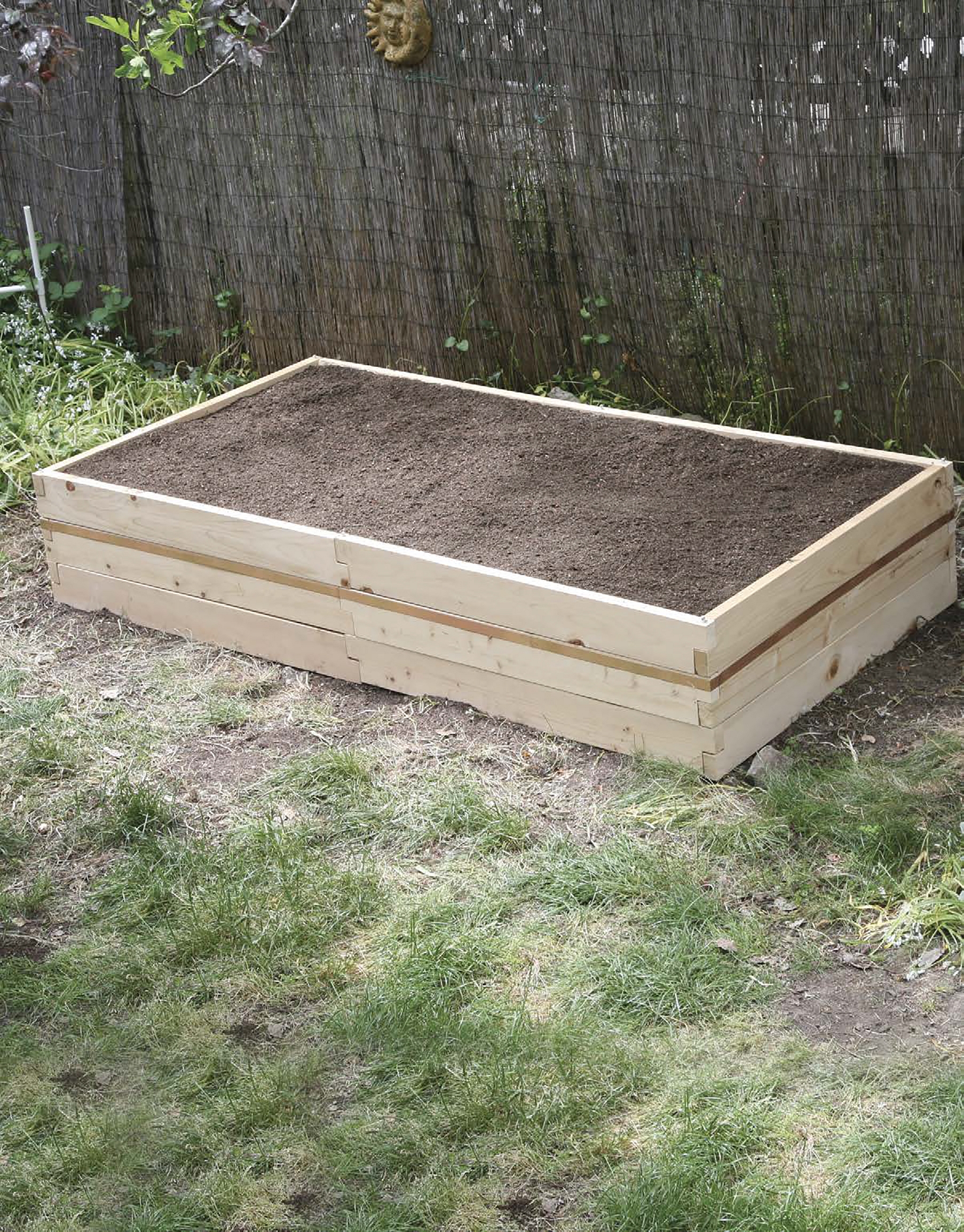 Once youve built the frame for your raised garden bed, fill it with soil. This is what it should look like when youre done. GARDEN GUIDE If you want to garden in a raised bed youll need an adult to help you build it.
Once youve built the frame for your raised garden bed, fill it with soil. This is what it should look like when youre done. GARDEN GUIDE If you want to garden in a raised bed youll need an adult to help you build it.
Some stores also sell garden bed kits. TIME TO PLANT The best way to choose which vegetables to grow is to think about what you like to eat. Thats one way to make sure you enjoy your vegetable garden. Some plants are easy for beginners. Many first-time gardeners have luck with beans, cucumbers, squash, and tomatoes. The kind of vegetables you grow will affect how you plant them.
Next page
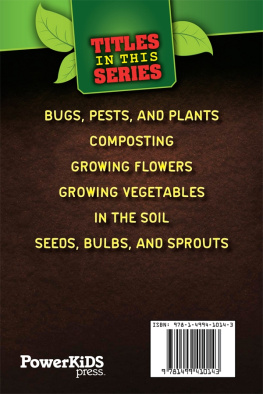
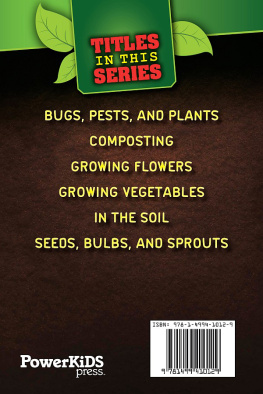

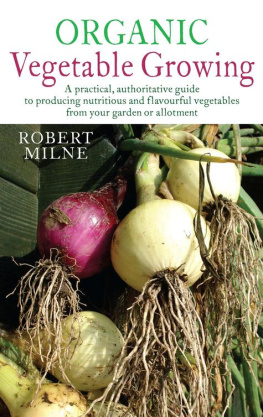
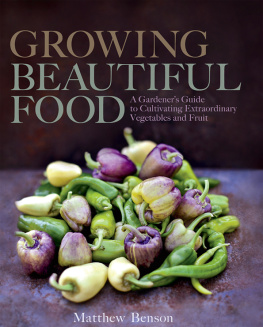
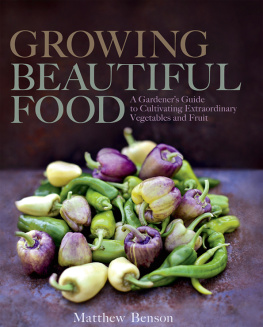
 Published in 2016 by The Rosen Publishing Group, Inc. 29 East 21st Street, New York, NY 10010 Copyright 2016 by The Rosen Publishing Group, Inc. All rights reserved. No part of this book may be reproduced in any form without permission in writing from the publisher, except by a reviewer. First Edition Editor: Sarah Machajewski Book Design: Michael J. Flynn Photo Credits: .
Published in 2016 by The Rosen Publishing Group, Inc. 29 East 21st Street, New York, NY 10010 Copyright 2016 by The Rosen Publishing Group, Inc. All rights reserved. No part of this book may be reproduced in any form without permission in writing from the publisher, except by a reviewer. First Edition Editor: Sarah Machajewski Book Design: Michael J. Flynn Photo Credits: . Many gardeners think vegetables are among the easiest plants to grow. Growing vegetables is a great activity for people who are new to gardening. WHAT IS A VEGETABLE? Vegetables are plants. Plants have different parts, and each has a special job. Roots keep a plant in the ground. They also take in water and that plants need to grow.
Many gardeners think vegetables are among the easiest plants to grow. Growing vegetables is a great activity for people who are new to gardening. WHAT IS A VEGETABLE? Vegetables are plants. Plants have different parts, and each has a special job. Roots keep a plant in the ground. They also take in water and that plants need to grow. These plant parts work together to help plants grow and survive. A vegetable is the edible part of a plant. If something is edible, that means you can eat it. Vegetables are sorted into groups based on what part of a plant they are. That means when you eat vegetables, you could be eating a root, stem, leaf, bulb, or even flower.
These plant parts work together to help plants grow and survive. A vegetable is the edible part of a plant. If something is edible, that means you can eat it. Vegetables are sorted into groups based on what part of a plant they are. That means when you eat vegetables, you could be eating a root, stem, leaf, bulb, or even flower. Tubers are vegetables that are underground stems or large roots.
Tubers are vegetables that are underground stems or large roots. GARDEN GUIDE Some plants we call vegetables are actually fruit. A fruit is a plant part that contains seeds. Tomatoes and peppers are common examples of fruits we call vegetables. GETTING STARTED The first step in starting a vegetable garden is picking where you want to plant it.
GARDEN GUIDE Some plants we call vegetables are actually fruit. A fruit is a plant part that contains seeds. Tomatoes and peppers are common examples of fruits we call vegetables. GETTING STARTED The first step in starting a vegetable garden is picking where you want to plant it. Many gardeners plant vegetables in the ground. Gardeners with limited space often grow vegetables in pots. Think about what works best for the space you have. DIG IN! The next step in vegetable gardening is preparing your garden beds. The dirt in many backyards isnt good for planting because it may lack important nutrients.
Many gardeners plant vegetables in the ground. Gardeners with limited space often grow vegetables in pots. Think about what works best for the space you have. DIG IN! The next step in vegetable gardening is preparing your garden beds. The dirt in many backyards isnt good for planting because it may lack important nutrients.
 Soil preparation is one of the most important gardening steps. GARDEN GUIDE Drainage is very important in vegetable gardening.
Soil preparation is one of the most important gardening steps. GARDEN GUIDE Drainage is very important in vegetable gardening.  Once youve built the frame for your raised garden bed, fill it with soil. This is what it should look like when youre done. GARDEN GUIDE If you want to garden in a raised bed youll need an adult to help you build it.
Once youve built the frame for your raised garden bed, fill it with soil. This is what it should look like when youre done. GARDEN GUIDE If you want to garden in a raised bed youll need an adult to help you build it.